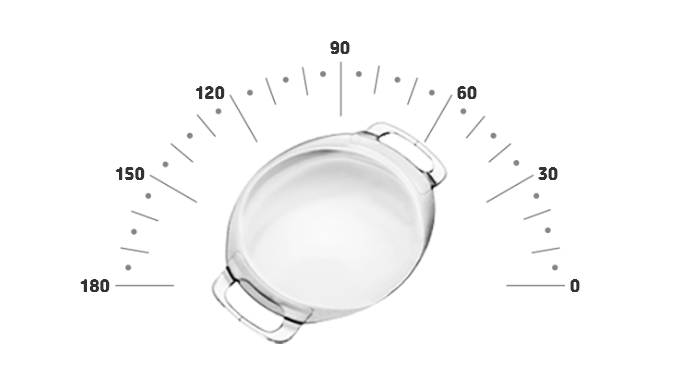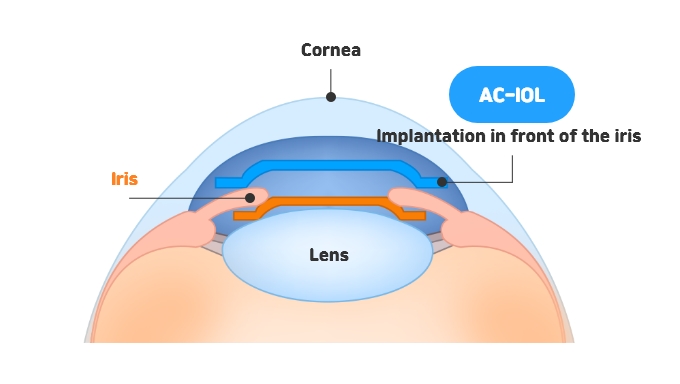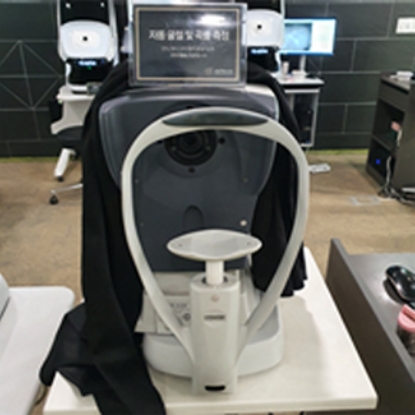Custom IOL implantation of GS Eye Center, the outcomes of 17 years of experience
-

Those with high myopia or astigmatism having difficulty in LASIK and LASEK
-
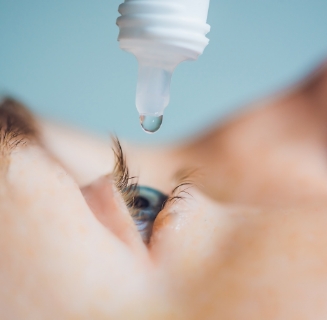
Those who wish to minimize side effects like glare and dry eyes
-

Those who wish for a quick recovery with 1-day surgery
-

Those who wish to maintain continued visual acuity without progression of myopia
The IOL implantation requires experienced and highly skilled medical staff.
We have 17 years of continued surgical experience since the opening of GS Eye Center.
The IOL implantation refers to a surgical procedure of inserting the intraocular lens into the eye. It requires high professionalism and skilled experience of the medical staff than other laser vision correction surgery. From anterior chamber lens implantation to posterior chamber lens implantation, such as GLAZE and EVO + ICL, the medical staff of GS Eye Center, with more than 17 years of experience, will guarantee the best outcomes.


- PC-IOL Implantation
: GLAZE - PC-IOL Implantation
: EVO + ICL - AC-IOL Implantation
: ARTISAN - AC-IOL Implantation
: ALTIFLEX
Adherence to FDA guidelines; Safe surgery is possible without damaging structures in the eye.
The IOL implantation requires the process of inserting and unfolding the IOL folded under the dilated pupil. It is critical to have the skilled experience of inserting the IOL in the correct position at once so that it is not misplaced or overturned.
According to the standards *ICL type 3.0 mm or more / ARTISAN and ARTIFLEX 3.2 mm recommended by the US FDA, we can perform safe surgery by checking the ocular anterior chamber depth and the number of corneal endothelial cells without damaging the structures in the eyes.
-
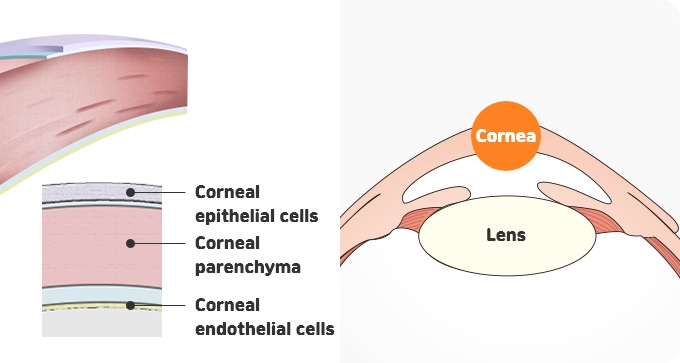
Corneal endothelial cell count
(Normal corneal endothelial cells: 2,000~3,000 ea.)
The normal number of endothelial cells is 2,000~3,000, which do not regenerate once get damaged. Therefore, surgery is performed based on individual test results following the US FDA's safety standards.
-

Anterior chamber depth of the eye
(AC-IOL 3.2 mm or more / PC-IOL 3.0 mm or more)
The anterior chamber depth of the eye refers to the distance between the lens and the back of the cornea. The US FDA provides safety standards for the anterior chamber depth of the eye for safe IOL implantation.
A detailed examination minimizes the size error of the ocular space for IOL insertion, and the surgery is performed considering the actual size inside the eye and visual axis.
As IOL implantation is a delicate surgery requiring advanced technology, post-surgery care must also be done thoroughly. Even in surgery conducted after thorough diagnostic examinations, various unexpected situations may occur. Problems may arise when the IOL is rotated by rubbing eyes after surgery or when it is not properly taken care of by skipping regular check-ups. It is important to visit the clinic regularly for check-ups.

The anterior and posterior axial length of the cornea, corneal curvature, depth of anterior chamber, and white to white are measured by the state-of-the-art anterior segment imaging and diopter calculating devices for accurate calculations that are free of errors so that the ocular space is calculated in advance to choose the right IOL.
Triple Diagnostic Systems
Surgery is determined after passing the strict triple diagnostic systems.
-

K5M
Diagnostic tester for dry eye
-

SIRIUS
Advanced precision analyzer for anterior and posterior walls of the cornea, thickness, anterior chamber, and lens
-

GALILEI G4
Advanced anterior segment imaging device
Multiple Diagnostic Systems
For additional examinations, approximately 60 kinds of detailed examinations are carried out to ensure the safest surgery for a patient’s eye condition.
-
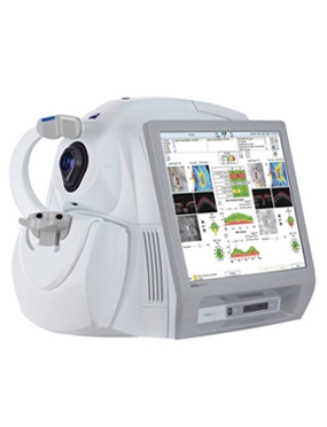
CIRRUS HD OCT-500
Ocular optical tomography
-
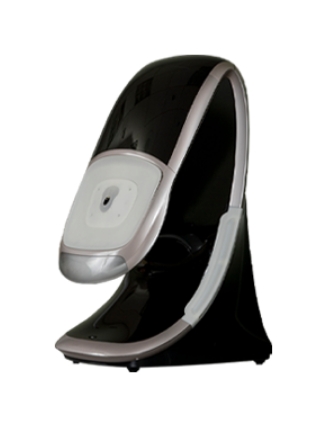
OPTOS
Wide-angle fundus camera
-

IOL Master
Contact-free laser optometry
-
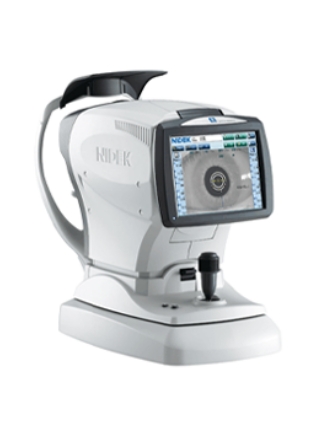
AL-Scan
Optical interferometry for eye-length measurement
-

01IOL size difference
Small IOL
A possibility of causing cataract due to contact with the lens
Large IOL
A possibility of causing glaucoma due to poor flow of aqueous humor
Other
A possibility of causing iris inflammation due to poor infection management after iris incision
-

02IOL size difference
The IOL with a misaligned axis of astigmatism do not perfectly correct astigmatism, causing ocular residual astigmatism.
-

03Low surgical experience
Surgery performed by experienced medical staff can minimize the surgery time and reduce the risk of damage and infection of the internal tissues of the eye.
We perform surgery of all lenses for the anterior chamber, posterior chamber, and astigmatism safely according to eye conditions.
The AC-IOL has the advantage of a good fixation, lowering the possibility of the IOL rotating as it is implanted by fixing it to the iris. The PC-IOL has excellent safety as it has been verified for the long term. It does not require iridectomy and has few side effects.
-

PC-IOL: Insertion between the iris and the lens
#high_stability #no_iridectomy_required #same_day_surgery_available
-

AC-IOL: Direct fixation of the IOL in front of the iris
#excellent_astigmatism_correction #minimize_light_glare #suitable_for_large_pupils
The surgery is performed with individually customized lenses chosen from a wide variety of lenses, including GLAZE, EVO + AQUA ICL, IPCL, ALTIFLEX, ARTISAN, etc.
-
PC-IOL
-
01
Recovery within 1~2 days
-
02
2.8 mm of corneal incision
-
03
Myopia correction from from -3.0D to -23D
-
04
Astigmatism correction from -0.5D to -5D
-
01
-
PC-IOL
-
01
Recovery within 1~2 days
-
02
3 mm of corneal incision
-
03
Myopia correction from -0.5D to -18D
-
04
Astigmatism correction from -1D to -6D
-
01
-
AC-IOL
-
01
The day after surgery
-
02
Iris incision required
-
03
3.2 mm of corneal incision
-
04
Myopia correction from -2D to -14.5D
-
01
PC-IOL Dual - Frontier
1. GLAZE
Optiflex GLAZE performed for the first time in Korea
Optiflex GLAZE is a PC-IOL implanted between the iris and the lens that allows for smooth drainage of aqueous humor through the center hole, eliminating the need for iridectomy. It is a premium IOL that provides clearer vision quality by being manufactured in an aspherical shape whose refractive index of light is scientifically calculated.
-
Step.0101
The human cornea is aspherical rather than spherical, so the aspherical lens made according to the refractive index of light is used in the surgery. It is thinner than a spherical lens and provides wide and clear vision without color dispersion or distortion of the field of view.
-
Step.0202
In most cases, you will experience improved vision the day after surgery. Quick recovery of a day or two is an advantage. There is almost no occurrence of xerophthalmia, and the post-surgery discomfort is also minimized.
-
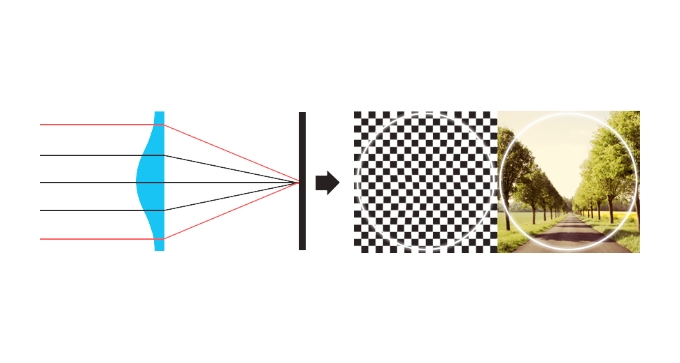
GLAZE surgery: Aspherical lens
-

Conventional surgery: Regular spherical lens
-
-
Step.0303
The center hole, the pathway of intraocular aqueous humor, is created in a conical shape, which promotes the smooth flow of aqueous humor and lowers the incidence of cataracts and glaucoma. With five holes in total, the aqueous humor can be sufficiently drained without iridectomy.
-
GLAZE flow of aqueous humor
-
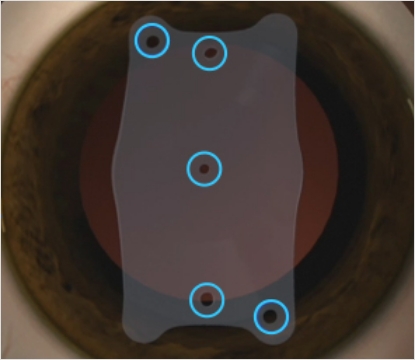
5 Holes in total
-

Center hole (pathway of intraocular aqueous humor)
-
-
Step.0404
A minimum 2.8 mm incision during surgery minimizes tissue damage to enable fast recovery. It also reduces the risk of astigmatism and post-surgery discomfort.

-
Step.0505
Permanent vision correction is possible without cleaning or any maintenance process after surgery. You can restore your eye to its original state by removing the IOL if necessary.
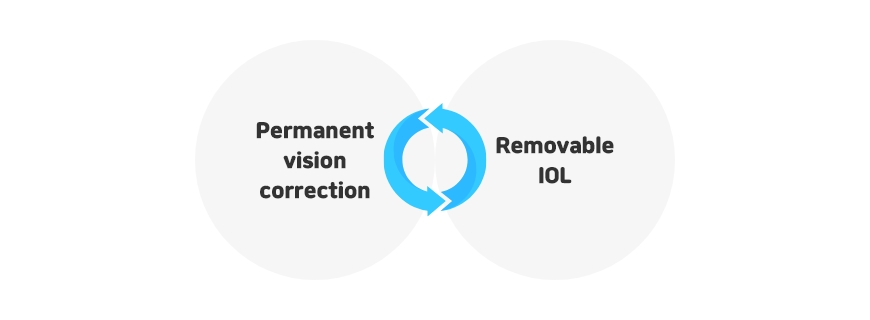
PC-IOL Dual - Frontier
2. EVO + AQUA ICL
ICL lenses are made of a material called Collamer, a polymer of collagen and HEMA.
Containing a small amount of purified collagen, it is the most human-friendly material that is optically very stable and effective.
-
Step.0101
The stability has been verified with 900,000 cases of surgeries over 20 years.
The Collamer material, developed by STAAR Surgical Company for the first time globally and approved by US FDA, delivers stability.-
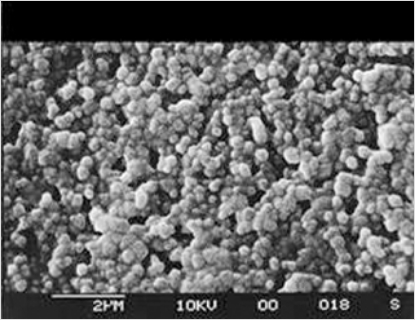
Conventional IOL
Protein deposition is confirmed when magnifying by 1,000 times after exposing it to a protein mixture for a minute.
-
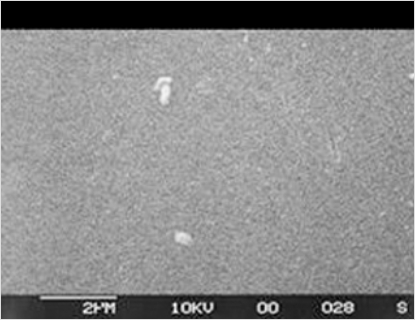
EVO + AQUA ICL Lens
Protein deposition is not detected in the same experiment.
-
-
Step.0202
The flow of aqueous humor is appropriate by creating the center hole and surrounding holes, which restores the natural flow of aqueous humor, reducing the possibility of developing cataracts and glaucoma.
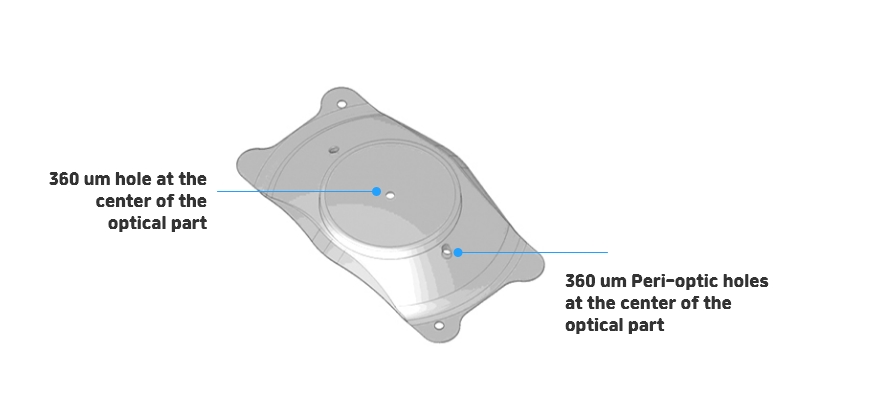
-
Step.0303
99% post-surgery customer satisfaction! The stability and efficacy of ICLs have been proven through a number of studies over a long period of time, showing 99% of customer satisfaction.
-

I am satisfied with surgery.
-

I will choose ICL if I receive surgery again.
-

I am satisfied with the excellent visual acuity after surgery.
A survey on the effect of Vision ICL and recovery of visual acuity (3,500 patients / STAAR Surgical)
※ References 1. Data on File. STMR Surgical. Voluntary post-op outcome database. 2. Visian ICL (Implantable Collamer Lens). PMA#P030016. -
AC-IOL
3. Artiflex
The design of the lens was inspired by the claw shape of a lobster to stably fix the lens on the iris to correct vision.
Unlike ICL, it is securely fixed on the iris between the cornea and the lens. It does not contact the lens and cornea directly, thus reducing the possibility of developing cataracts and glaucoma.
-
01
The recovery is quick enough to allow you to resume normal daily life and feel the corrected vision within 3 days after surgery.
-
02
The IOL replacement is possible if your eyes get worse after surgery, and the IOL can be removed, if necessary, allowing reoperation at any time.
Regular check-ups every 6 months as post-surgery management is crucial for IOL implantation.
-
01Vision maintenance examination
ARK Examination
It refers to a refraction examination that automatically measures the current status of refractive anomalies using a device.
-
02Corneal endothelial cells examination
Corneal endothelial cells examination
It checks the health conditions by measuring the cells of the innermost endothelial layer among the layers of the cornea.
-
03Retinal examination
OPTOS: Wide-angle fundus camera
It examines the retina by scanning it up to 200o for a short period of time without mydriasis.
We provide you with high customer satisfaction and visual acuity maintenance from post-surgery progress to regular check-ups every 6 months through individually customized surgery.
GS Eye Center will perform our medical practice to serve and understand our patients and their families in an honest and responsible manner.
As we understand that post-surgery management is equally important as surgery itself, we provide a systematic post-care service to look into the eyes of our patients so that they won’t regret what they have decided after long deliberation.

Please check in advance!
Precautions before examination
If you are planning to receive eye examinations and surgery on the same day, be sure to familiarize yourself with the precautions before surgery.
※ You must stop wearing contact lenses for a certain period of time before surgery.
※ Be sure to bring your glasses on the day of surgery.
-

Contact lens
- Soft lens (color lens) : Do not wear for 4 days
- Soft lens for astigmatism (color lens) : Do not wear for 7 days
- Hard lens : Do not wear for 7 days
- Dream lens : Do not wear for a month
-

Examination
- Examination takes about 2 hours.
- Visiting two different clinics for examination is impossible as a drug is used in the examination.
-

Driving
- Due to drug-aided eye examinations, you will be inconvenienced with short-distance vision for about 3~4 hours.
- Please use public transportation on the day of examinations as driving is not allowed.
-

Pregnant women
- Receiving eye examinations and surgery during pregnancy are not recommended due to hormonal changes.
- We recommend receiving eye examinations and surgery 3 months after childbirth or after breastfeeding.
-

Medication
- Taking medications, including tranquilizers and antidepressants, will not prevent you from receiving examinations.
- However, when receiving surgery, you must bring 1) a prescription for medications and 2) a doctor's note. The doctor’s note must include “the exact name of the diagnosis, availability of vision correction surgery under local anesthesia”.
Please check in advance!
Precautions before surgery
Your return to daily life varies by the surgical method. Choose the method of surgery that is the most appropriate for your lifestyle.
※ You must stop wearing contact lenses for a certain period of time before surgery.
※ Be sure to bring your glasses on the day of surgery.
-

Lens
- Soft lens (color lens) : Do not wear for 4 days
- Soft lens for astigmatism (color lens) : Do not wear for 7 days
- Hard lens : Do not wear for 7 days
- Dream lens : Do not wear for a month
-

Attire
- The surgery is performed lying down. Wearing a hoodie is strictly forbidden as it may affect surgical quality.
- Avoid wearing a short skirt during surgery.
-

Face makeup
- Avoid face makeup except for toner and lotion on the day of surgery.
- The surgical laser is sensitive to makeup and fragrances, so avoid using them during surgery.
-

Perm · Dye
- Hair perm and dye are allowed until 3 days before surgery. If you are planning to do so, do it in advance not to interfere with surgery.
-

Driving
- Driving right after surgery is prohibited. Please use public transportation or accompany a guardian.
-

Drinking
- Drinking a day before surgery is strictly forbidden.
-

Sunglasse
- To avoid light sensitivity and UV rays after surgery, bring sunglasses or a hat with you. (required for LASEK)
-

Medication
- Taking medications, including tranquilizers and antidepressants, will not prevent you from receiving examinations.
- • However, when receiving surgery, you must bring 1) a prescription for medications and 2) a doctor's note. The doctor’s note must include “the exact name of the diagnosis, availability of vision correction surgery under local anesthesia”.
Please check in advance!
Precautions during surgery
Familiarize yourself with the precautions during surgery in advance. It will reduce unnecessary tension and create a better environment to receive surgery based on proper cooperation.
Cooperation on waiting
-
01
Keep your eyes closed while you are waiting before surgery so that your eyes will not dry out.
-
02
The surgery is performed lying down. If you wear a hoodie, you must take it off before surgery.
-
03
If you are not wearing any clothes inside the hoodie, please inform the fact at the reception desk. We will provide you with clothes for you to change.
(The hoodie may cause unintended bodily movement during surgery.)
Cooperation before surgery
-
01
The surgery takes about 7~8 minutes. There is no pain during surgery with topical anesthesia.
-
02
Because of topical anesthesia, your eye may not blink as usual. Do not intentionally close your eyes.
-
03
We use a special device to keep your eyes open during surgery. You do not have to worry about naturally blinking your eyes during surgery.
Cooperation during surgery
-
01
Do not verbally ask questions during surgery unless it is an emergency. Instead, raise your hand to find a nurse.
-
02
Do not turn your head or move your eyes during surgery. The duration and the outcomes of surgery depend on your cooperation.
-
03
The surgeon and nurse will provide a thorough explanation to avoid panicking during surgery.
Please check in advance!
Precautions after surgery
Please refer to the number of days required to resume the activities by surgical method.
| Smile LASIK | LASIK | 2-Day LASEK | Lens Implantation | |
|---|---|---|---|---|
 |
From the next day | After two days | After four days | After a week |
 |
After a week | After two weeks | After two weeks | After a month |
 |
From the next day | From the next day | After four days | From the next day |
 |
From the next day | After two days | After a week | After two weeks |
 |
After a week | After two weeks | After a month | After a month (External impact caution) |
 |
From the next day | After two days | After four days | After a week |
 |
From the next day | After a week | After two weeks | After a week |
 |
After a week | After a week | After two weeks | After a week |
 |
From the next day | After two days | After a week | After a week |
 |
After a week | After a week | After a week | After a week |
 |
After a week | After a week | After a week | After a week |
 |
Do not wear. | Wear for a week | Wear for four days | Wear for a week |






